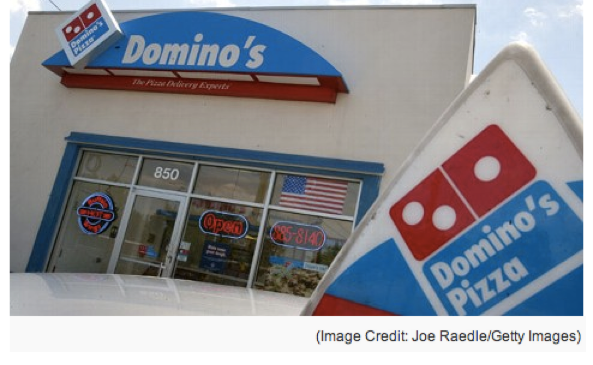Last week I read an article on USA Today that Domino’s has announced they are offering Gluten free pizza in some locations, and I thought that was a pretty big deal. Definitely a step in the right direction for those of us who miss our pizza, right? Perhaps….
The company’s new gluten-free crust is made from rice flour, potato starch, rice starch and olive oil. Domino’s worked with the National Foundation for Celiac Awareness to bring their standards to the company’s employees and kitchens.
“Offering Domino’s Gluten Free Crust is a big step for us, and we wanted to make sure we were doing it right,” Domino’s CEO J. Patrick Doyle said in a statement.“The prevalence of gluten sensitivity has become a real issue with significant impact on consumer choice, and we want to be a part of the solution,” he said.
Although the crust is gluten-free, the company only recommends that those with a mild gluten allergy enjoy the pizza. It doesn’t recommend the crust for those with Celiac disease because it can’t fully guarantee the product hasn’t come in contact with gluten. This is an important point that made me take notice as most people I know aren’t just a little sensitive to gluten. In fact, there is little known as to whether someone with Non Celiac Gluten Sensitivity can tolerate small amounts of gluten. I’ve heard some people claim to be able to, however, I know personally I can’t handle any cross contamination, though I lived a lifetime of the damaging effects (wasn’t diagnosed until I was in my mid 30’s) so perhaps my son (who hasn’t eaten gluten since he was 4) would be ok with a little cross contamination here and there. Or perhaps not. I don’t really know. But it’s certainly something I was surprised to see the National Foundation for Celiac Awareness endorse. Anyway, just beware that you may not fare so well due to cross contamination issues and be careful before you over indulge.
The pizza costs $12, about $3 more than a regular pie. One slice of a 10-inch pepperoni pie has 170 calories, 3.5 grams of saturated fat and 410 milligrams of sodium.
National Gluten-free options:
According to USA Today, there are several other national chains now offering gluten-free options (to be honest, there are many more, which we will start showcasing soon), but these are the ones which they pointed out:
•Casual dining. P.F. Chang’s, an industry standout with 25 gluten-free dishes, just added seven more to its menu, including Gluten-Free Caramel Mango Chicken and Gluten-Free Asian Tomato Cucumber Salad. It also uses gluten-free soy sauce , which is the key to making these dishes taste as good as conventional dishes, says Dan Drummond, brand director.
•Chips. At Frito-Lay, the most common request on its consumer affairs line is for gluten-free offerings, spokeswoman Aurora Gonzalez says. Frito-Lay has recently begun labeling packaging on more than a dozen chips that are gluten-free with a special “GF” (gluten-free) icon or statement on the back of the bag.
•Subs. Subway has been testing gluten-free products, including bread and brownies, at some stores in four key markets since early 2011, says Tony Pace, chief marketing officer for the Subway brand. Those markets: Dallas/Fort Worth; Portland, Ore.; Tacoma, Wash.; and Duluth, Minn.
•Beer. Also Monday, Anheusher-Busch will roll out Michelob Ultra Light Cider, which is gluten-free. In 2006, it launched Redbridge, the first nationally available gluten-free beer.
So what does this mean?
Well, it’s a sign that things are moving in the right direction for us! We just need to be careful to note the reality of the impact gluten has on our compromised bodies, and how important it is to manage our health. I urge you not to get too excited about the abundance of gluten-free products available to us now; beware of how you’re feeling and take note if you have an adverse response. It took me a little while to realize that cross contamination is sometimes an issue for me; my symptoms are typically gas, bloating, fatigue and headaches. Other responses you may be having are related to cross- reactive issues which I’ve outlined a bit here.
Because there isn’t a lot of research done on how gluten sensitivity and other food allergies and sensitivities affect us, we are often left to work through this on our own. So if you’re like me, you talk to anyone who is in a similar situation and see how it affects him or her. I hope one day to have a member base here where we can run polls and compile enough data to make a difference and help others like us. So for now, I post articles and my opinions, and I hope they help 🙂
So please – share your thoughts, opinions, ideas, etc. too! The more we learn about how we each successfully manage our food allergies and sensitivities, the better lives we lead.
In good health,
Jen

